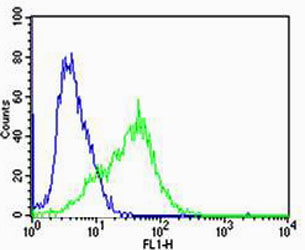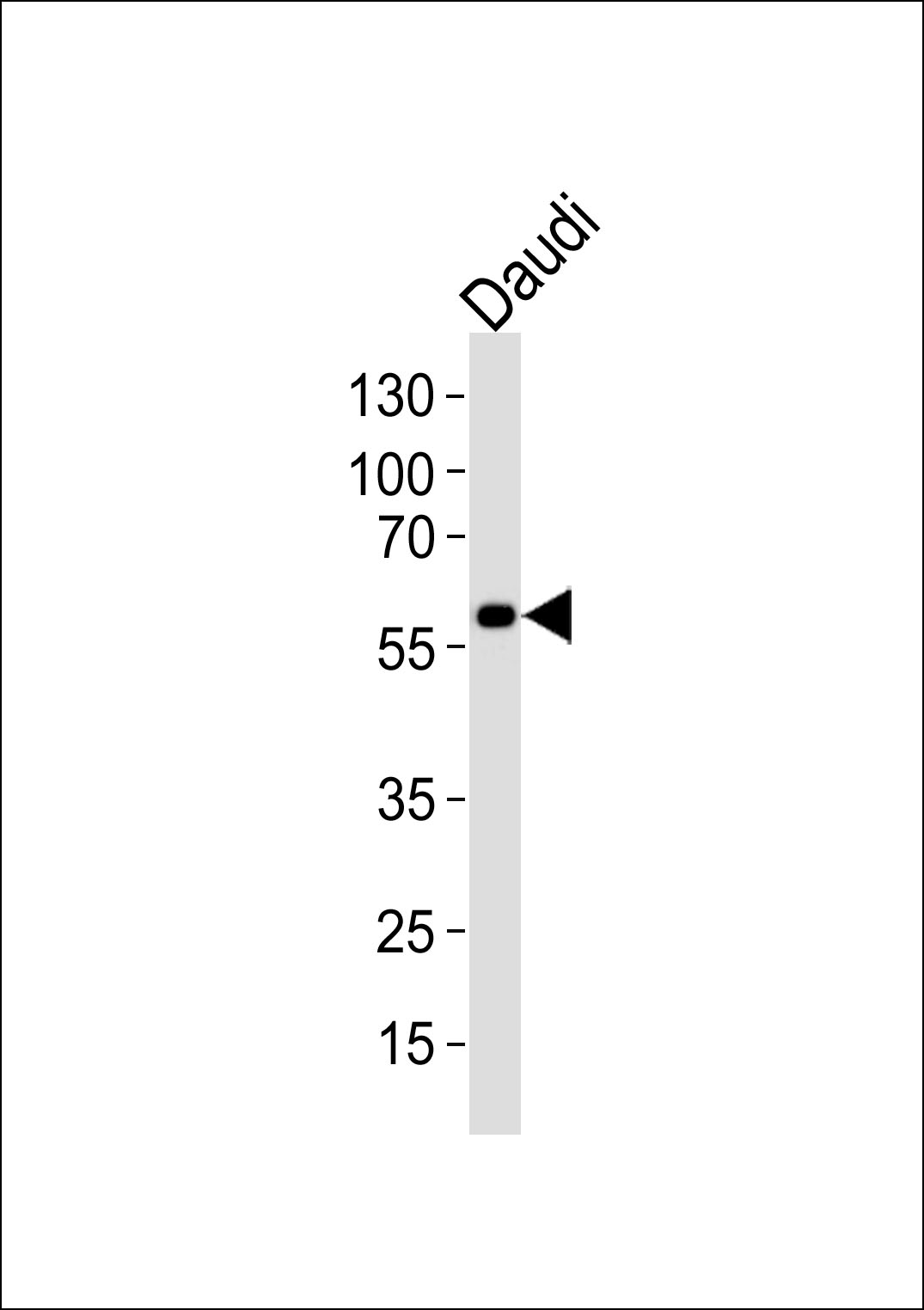产品名称
CHRNA9 Rabbit Polyclonal Antibody (N-term)
别名
Neuronal acetylcholine receptor subunit alpha-9, Nicotinic acetylcholine receptor subunit alpha-9, NACHR alpha-9, CHRNA9, NACHRA9
存储缓冲液
Purified polyclonal antibody supplied in PBS with 0.09% (W/V) New type preservative N. This antibody is purified through a protein A column, followed by peptide affinity purification.
Human Swissprot No.
Q9UGM1
特异性
This CHRNA9 antibody is generated from a rabbit immunized with a KLH conjugated synthetic peptide between 8-42 amino acids from the N-terminal region of human CHRNA9.
运输及保存条件
Maintain refrigerated at 2-8°C for up to 2 weeks. For long term storage store at -20°C in small aliquots to prevent freeze-thaw cycles.
背景介绍
Ionotropic receptor with a probable role in the modulation of auditory stimuli. Agonist binding may induce an extensive change in conformation that affects all subunits and leads to opening of an ion-conducting channel across the plasma membrane. The channel is permeable to a range of divalent cations including calcium, the influx of which may activate a potassium current which hyperpolarizes the cell membrane. In the ear, this may lead to a reduction in basilar membrane motion, altering the activity of auditory nerve fibers and reducing the range of dynamic hearing. This may protect against acoustic trauma. May also regulate keratinocyte adhesion.
组织表达
Expressed in cochlea, keratinocytes, pituitary gland, B-cells and T-cells.
细胞定位
Cell junction, synapse, postsynaptic cell membrane; Multi-pass membrane protein. Cell membrane; Multi-pass membrane protein
功能
Ionotropic receptor with a probable role in the modulation of auditory stimuli. Agonist binding induces a conformation change that leads to the opening of an ion-conducting channel across the plasma membrane (PubMed:
11752216, PubMed:
25282151). The channel is permeable to a range of divalent cations including calcium, the influx of which may activate a potassium current which hyperpolarizes the cell membrane (PubMed:
11752216, PubMed:
25282151). In the ear, this may lead to a reduction in basilar membrane motion, altering the activity of auditory nerve fibers and reducing the range of dynamic hearing. This may protect against acoustic trauma. May also regulate keratinocyte adhesion (PubMed:
11021840).


